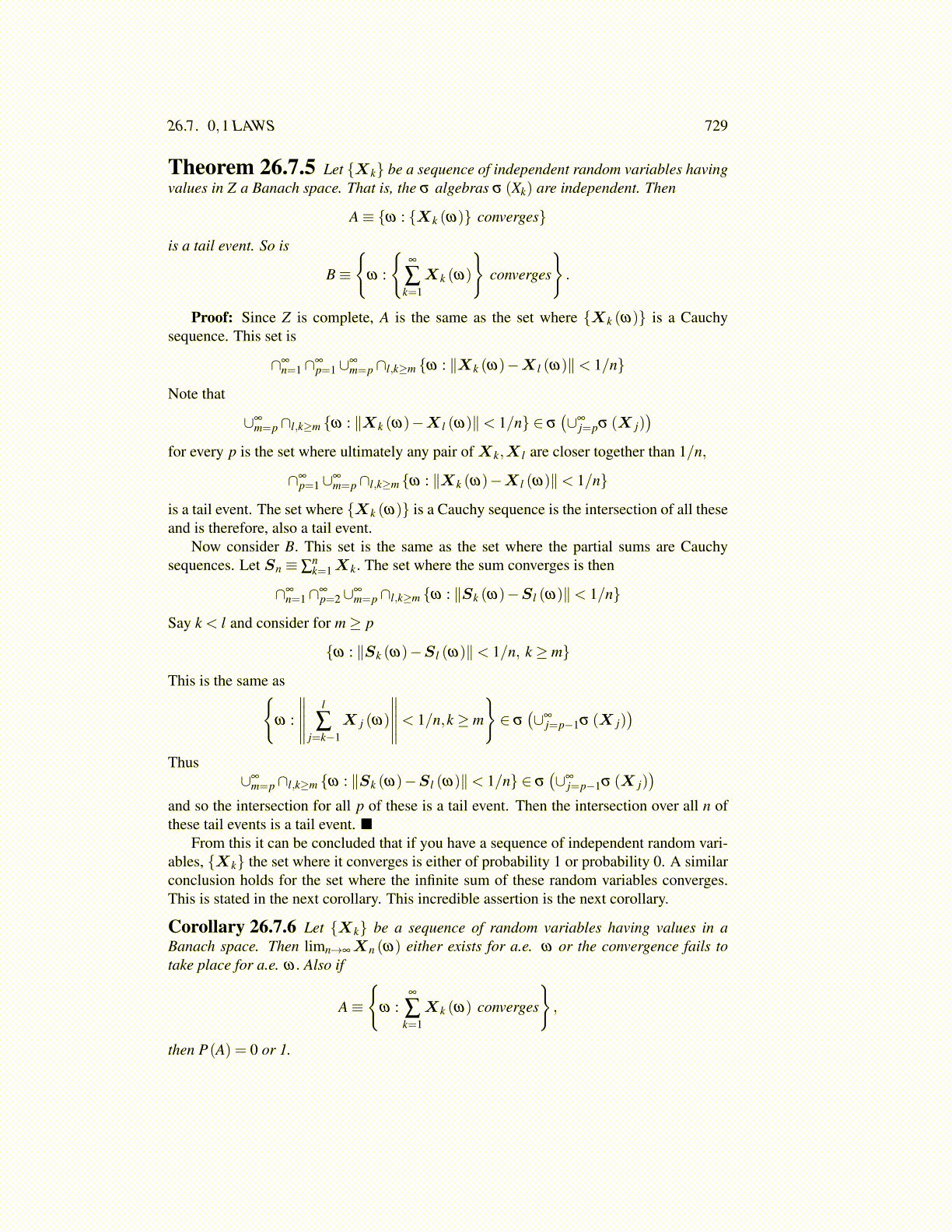
26.7. 0,1 LAWS 729
Theorem 26.7.5 Let {Xk} be a sequence of independent random variables havingvalues in Z a Banach space. That is, the σ algebras σ (Xk) are independent. Then
A≡ {ω : {Xk (ω)} converges}
is a tail event. So is
B≡
{ω :
{∞
∑k=1Xk (ω)
}converges
}.
Proof: Since Z is complete, A is the same as the set where {Xk (ω)} is a Cauchysequence. This set is
∩∞n=1∩∞
p=1∪∞m=p∩l,k≥m {ω : ∥Xk (ω)−X l (ω)∥< 1/n}
Note that
∪∞m=p∩l,k≥m {ω : ∥Xk (ω)−X l (ω)∥< 1/n} ∈ σ
(∪∞
j=pσ (X j))
for every p is the set where ultimately any pair ofXk,X l are closer together than 1/n,
∩∞p=1∪∞
m=p∩l,k≥m {ω : ∥Xk (ω)−X l (ω)∥< 1/n}
is a tail event. The set where {Xk (ω)} is a Cauchy sequence is the intersection of all theseand is therefore, also a tail event.
Now consider B. This set is the same as the set where the partial sums are Cauchysequences. Let Sn ≡ ∑
nk=1Xk. The set where the sum converges is then
∩∞n=1∩∞
p=2∪∞m=p∩l,k≥m {ω : ∥Sk (ω)−Sl (ω)∥< 1/n}
Say k < l and consider for m≥ p
{ω : ∥Sk (ω)−Sl (ω)∥< 1/n, k ≥ m}
This is the same as{ω :
∥∥∥∥∥ l
∑j=k−1
X j (ω)
∥∥∥∥∥< 1/n,k ≥ m
}∈ σ
(∪∞
j=p−1σ (X j))
Thus∪∞
m=p∩l,k≥m {ω : ∥Sk (ω)−Sl (ω)∥< 1/n} ∈ σ(∪∞
j=p−1σ (X j))
and so the intersection for all p of these is a tail event. Then the intersection over all n ofthese tail events is a tail event. ■
From this it can be concluded that if you have a sequence of independent random vari-ables, {Xk} the set where it converges is either of probability 1 or probability 0. A similarconclusion holds for the set where the infinite sum of these random variables converges.This is stated in the next corollary. This incredible assertion is the next corollary.
Corollary 26.7.6 Let {Xk} be a sequence of random variables having values in aBanach space. Then limn→∞Xn (ω) either exists for a.e. ω or the convergence fails totake place for a.e. ω. Also if
A≡
{ω :
∞
∑k=1Xk (ω) converges
},
then P(A) = 0 or 1.